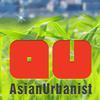With all the benefits of compact cities being touted, emerging cities are engaging in higher density development. Urban designers and architects are facing a mounting challenge to create high quality living and working environment within tight space constraints. As cities get more compact, one of the first casualties will be our public spaces.
Asian cities offer a unique and rich diversity of streets and public spaces. Persisting high density and compactness has long prohibited attempts to create large open civic spaces. As a result, the typology of public spaces is a dynamic patchwork of interconnected plots in-between buildings. This dynamism is enhanced by the fact that streets, in Asia, serve far more users than public spaces in the west. They are often crowded past midnight. Major activities along the street are hanging out, eating, park going and other recreational past-times favored by urbanites. A major activity remains strolling and window-shopping, which are seen as forms of recreation.
Besides commuting, the Asian street has a variety of societal functions; it is a business space catering to a variety of permanent or temporary trades; it is a stage for political and religious discourse as well as public expression; it is a gathering space for families and friends and sometimes becomes the living room or dining room.
Such a culture may be reflective of the limited space at home which contributes to the intensified activities in the public space. In a constrained space, land becomes an absolute premium. The minimum area for living spaces are being be further limited, pushing more activities to the public realm, out in the streets.
The question is how compact and how dense can we go while maintaining not only the quality of our streets and public spaces but also the quality of life of the residents.

